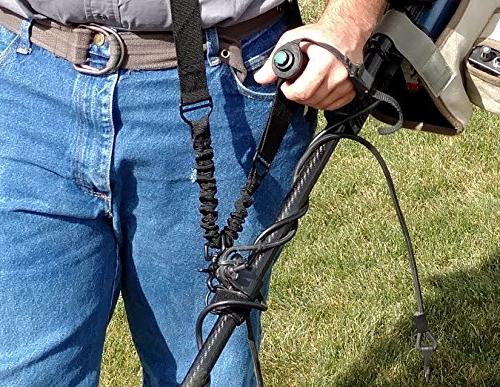Swinging patterns are a crucial aspect of metal detecting that can greatly impact your success in finding treasures buried beneath the ground. Understanding and mastering swinging patterns is essential for any detectorist looking to maximize their efficiency and increase their chances of making exciting finds.
The swinging pattern refers to the motion you use when sweeping your metal detector back and forth over the ground to locate targets. This seemingly simple action actually requires skill and practice to perfect, as it directly affects how well you cover an area and detect buried objects.
There are several key elements to consider when developing your swinging pattern:
1. **Speed**: The speed at which you swing your metal detector is important. A slow, steady pace allows the detector enough time to send out signals, receive responses from potential targets, and process the information. Moving too quickly can cause you to miss signals or not give the machine ample time to detect smaller or deeper targets.
2. **Overlap**: Maintaining proper overlap between each swing is vital for thorough coverage of an area. Each sweep should slightly overlap with the previous one, ensuring that no spot goes undetected. Consistent overlapping ensures that every inch of ground is scanned multiple times from different angles, increasing the likelihood of finding hidden treasures.
3. **Swing Arc**: The arc or width of your swing also plays a role in how effectively you cover an area. A wider swing arc covers more ground per sweep but may sacrifice depth due to less concentrated detection power reaching further out from the coil. Conversely, a narrower swing arc allows for greater depth penetration but requires more passes over an area to ensure complete coverage.
4. **Consistency**: Maintaining a consistent swinging pattern throughout your detecting session is essential for optimal results. Random or erratic swings can lead to missed targets or incomplete coverage of an area. Developing a rhythmic and systematic approach will help you stay focused and ensure thorough detection across all parts of the search area.
5. **Angle Adjustments**: Varying the angle at which you hold your metal detector while swinging can also impact detection performance. Experiment with different angles—parallel to the ground, tilted slightly forward or backward—to see which position yields better results based on soil conditions, target types, and personal comfort preferences.
6..**Ground Conditions**: It’s important to adapt your swinging pattern based on varying soil conditions such as mineralization levels, moisture content, terrain unevenness, and presence of debris like rocks or roots that may affect signal reception and target identification abilities.
7..**Target Size & Depth:** Larger targets generally require a slower swing speed than smaller ones because they produce stronger signals that need more time for processing by detectors’ circuitry; however if hunting shallow areas where there could be many small items close together then faster speeds might be necessary so as not miss any potential hits along way.
By honing these swinging techniques through regular practice sessions in different environments with varying target densities (e.g., parks versus beaches), depths (shallow water versus dry land), etc., beginner enthusiasts will gradually improve their skills while advanced users will discover new ways optimize performance levels beyond what was previously thought possible – all leading towards increased overall success rates during future hunts!
